In his 2001 best seller, A Theory of Everything, Ken Wilbur extends the work of Grave’s Dynamic Spiral to share an integral vision of a world where all elements of being coexist and depend on each other for the overall health of the entire spectrum of consciousness. He shares thoughts on how Science and Religion not only can coexist in a pluralistic sense but must if we are able to move beyond being right and on to getting it right as Rene Brown would have us strive for.
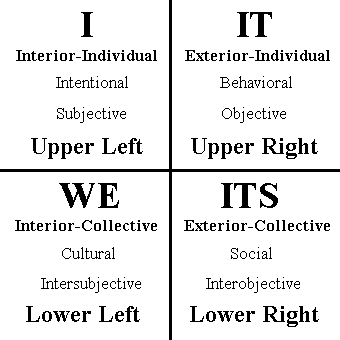

The great resignation and battle for digital talent persists in the minds of executives and government leaders across the world as economies and business models transform to digital and positions within ecosystems are reimagined within a comprehensive digital operating model. In a rapidly changing world, participants need to find new ways to differentiate themselves and present competitive propositions.
Whilst Australia has been famously successful in its strategy of holes and homes, its risks are presenting . For decades, successive mineral booms (holes) and growing Asian demand have underpinned economic activity. The housing economy (homes) consists of residents buying and selling property from and to each other for ever-higher prices using borrowed money in a surreal pyramid of paper wealth creation, which hit A$9tn (more than 4 times GDP) in 2021. This structure is narrow and risky, creating low-quality, fictional prosperity.
As all sectors adopt digital centric value chains, demand for digital talent explodes
Meanwhile a new breed of industry is taking hold quickly as the predictions of the information age gather pace. Whilst the USA has benefited greatly from the foundations of Silicon Valley, all sectors must now adopt a digital centric view of their value chain.
The success of Atlassian and Canva has attracted local and international capital to a growing workforce and demand for technologists . According to the IBIS World research report data, the total market value of Australian software development companies stands at about $13 billion and is growing at an annualized 11.4% over the past 5 years. This trend of growth in the software development services in Australia will also continue for the next five years where there are over 1,000 IT providers on the software development market. According to ACS Australia’s Digital Pulse, the digital sector was expected to contribute about $139 billion dollars in the Australian GDP by the end of 2020 with a 40% growth is forecasted by the end of 2023. Australia is becoming one of the fastest growing education and technology hubs in the Asia Pacific region. It attracts numerous engineering students and skilled and qualified engineers and developers to the country for pursuing their goals of life. Software developers in Australia are in very high demand and the newly formed Tech Council of Australia has a goal to create one million jobs in the Australian tech sector by 2025, up from the 861,000 now.
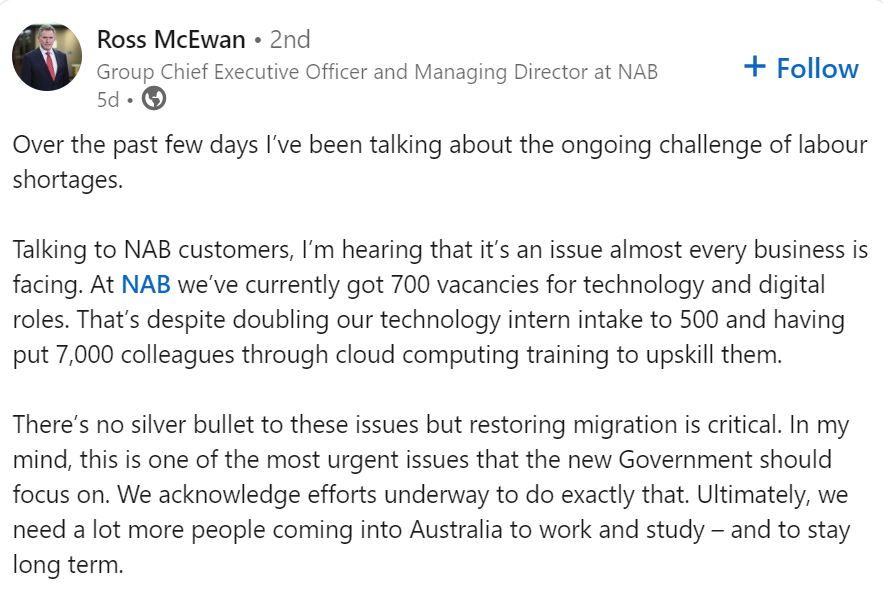
NAB CEO Ross McEwan recently discussed the pressure on LinkedIn and was backed up by CIO Anastasia Commarato who commented that the issue of labour shortages in technology and digital is complex and that solving it involves : – encouraging more students into STEM, partnering with educational pathways, training, access to global talent through immigration, partners or local presence and focussing on all the levers that make a company, culture and team one that people want to join and stay.
It’s a comprehensive view and highlights the multidimensional approach to solving a difficult challenge. Yet the people issue doesn’t exist in isolation from the changing world. We are moving away from centralised economies to decentralised ones. During this transition competitive entities in a digital ecosystem will be more agile, network centric and smaller than in the past. Bank as a Service and Embedded finance are good examples here. Under these models, banks perform core network functions such as managing deposits, loans and payments for broader distribution channel partners to utilise. It’s not clear where the staff increases are at NAB and whether they are following or resisting this unbundling approach.
Millennials resist Large Corporations who aren’t ethically aligned and where they are not heard
Research shows that more than other factors, a toxic culture is cited as the biggest contributor to employee attrition during The Great Resignation where culture is 10 times more likely to affect churn rate than compensation.
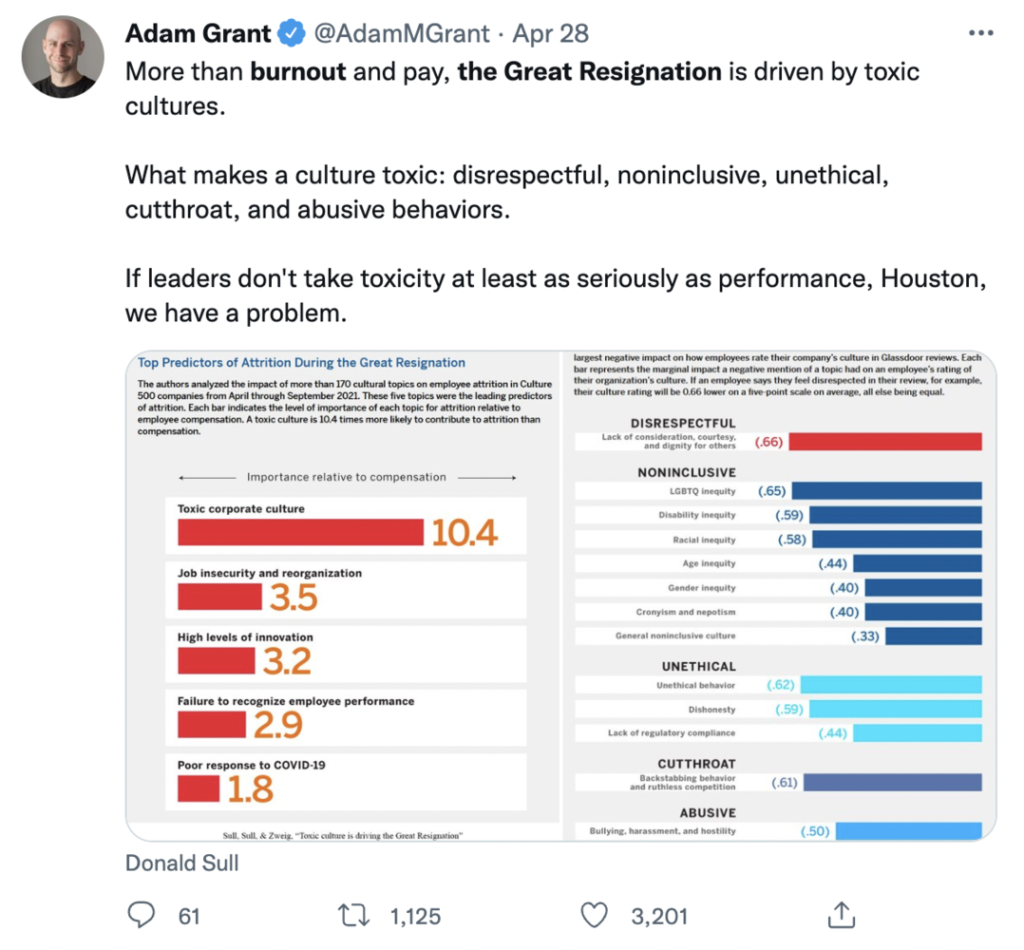
We are seeing, particularly in the younger demographics where the fight for talent is at its greatest large corporations have their work cut out for them. Fancy packages, titles and a promise of security are no longer enough. They want to work somewhere where they are heard, that is having an impact societally and environmentally, is contemporary and relevant.
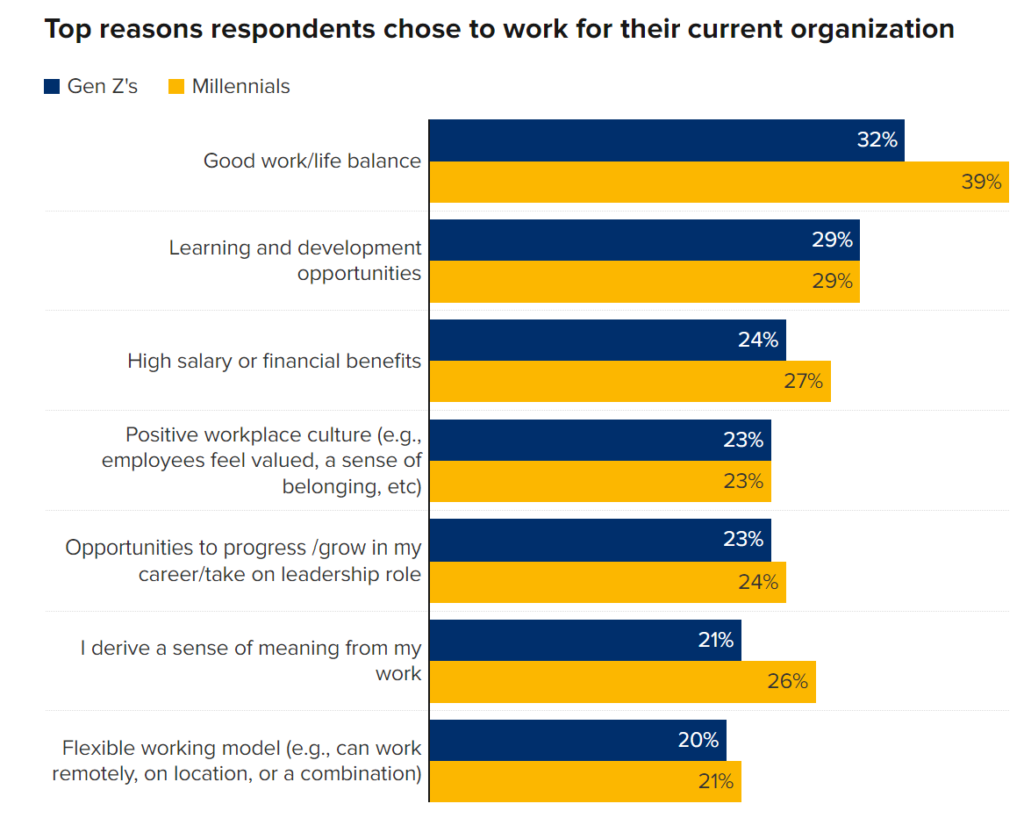
“The expectations of business to drive societal change [and] environmental change has never been higher,” said Michele Parmelee, Deloitte Global deputy CEO and chief people and purpose officer in their recently published report.
These factors warrant attention when the top jobs for Millennials are heavily digital with the top 5 jobs for them in the USA being, Web Developer, Dental Hygienist, Software Developer, Systems Analyst & Mechanical Engineer
When they think about where they want to work, the traditional egocentric business models of larger corporations are not catering to Millennial needs. They do not encompass the modern values of younger corporations – those being sustainability, trust and cooperation.
They want the freedom to choose what to do and have control over their work. At a startup, they are able to engage in more high-level work earlier on in their career due the startup business model. Every day is different. You quickly take on a lot of responsibility, you are held accountable for mistakes, and you often set your own objectives. The startup environment is the perfect place to learn, and fast. Autonomy and the ability to make crucial decisions early on is an incredibly motivating factor. It makes for a dedicated, hardworking and efficient team that draws talent.
Indeed staff at major banks and some of the world’s biggest technology companies are increasingly leaving for FinTech start-ups, new analysis shows. Bankers, engineers, data scientists and sales staff from Wall Street, the City of London and Silicon Valley are among those joining a mass departure that picked up speed during the Covid-19 pandemic, according to data compiled by Revelio Labs, a workplace intelligence company.
This strain on talent adds weight to the FinTech Bank partnership model. Against a backdrop of rapid, wide-ranging technological disruption, there’s been a sea change in how established banks view their relationships with fintech businesses, and a growing appetite for closer collaboration.
While in recent years banks have sometimes viewed fintechs as competitors and questioned their role in a highly regulated environment, they are now broadly recognised by financial institutions as valuable partners for the future to provide access to talent, speed, innovation and economics. In banking where margin is made by manging risks better than the competition, Fintechs bring new opportunities.
Not that it’s all plain sailing. The competitive values framework, which bears uncanny resemblance to the TOE framework above, highlights the culture clash that many bank executives yearn from fintechs to bring agility, economics and innovation around the customer, can be antithetical to the corporate operating model, encountering much resistance along the way.
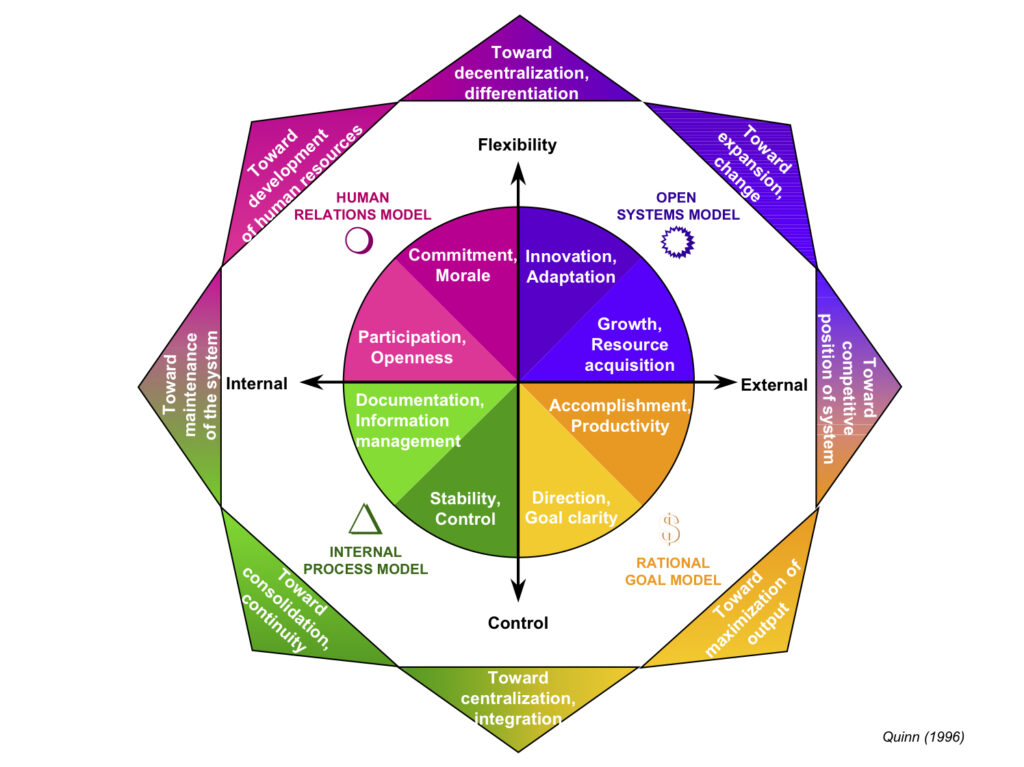

Yet it can be done and done well. CBA recently partnered with Shaype BaaS to deliver Hey Kit for Children Bankin. In a complete flip of the model, CBA, Australia’s largest bank provide the UI whilst Shaype provide the banking.
In 2021 Moroku partnered with the worlds 5th largest bank to deliver a gamified equities trading platform to teach Millennials the fundamentals of investing.
Partnering with agile Fintechs allows Banks to move faster and cheaper whilst getting access to the talent that they want but don’t necessarily want to work for them directly. To do so requires not only APIs but a truly plug and play architecture, strategic desire to buy vs build and be a digital ecosystem leader.
Under this model banks begin to operate not just as a participant in the financial technology ecosystem but a facilitator and map maker should they dream big enough, creating a vision for shareholders, employees and customers to get excited about, in a very Ken Wilber fashion, a more measured greatness.